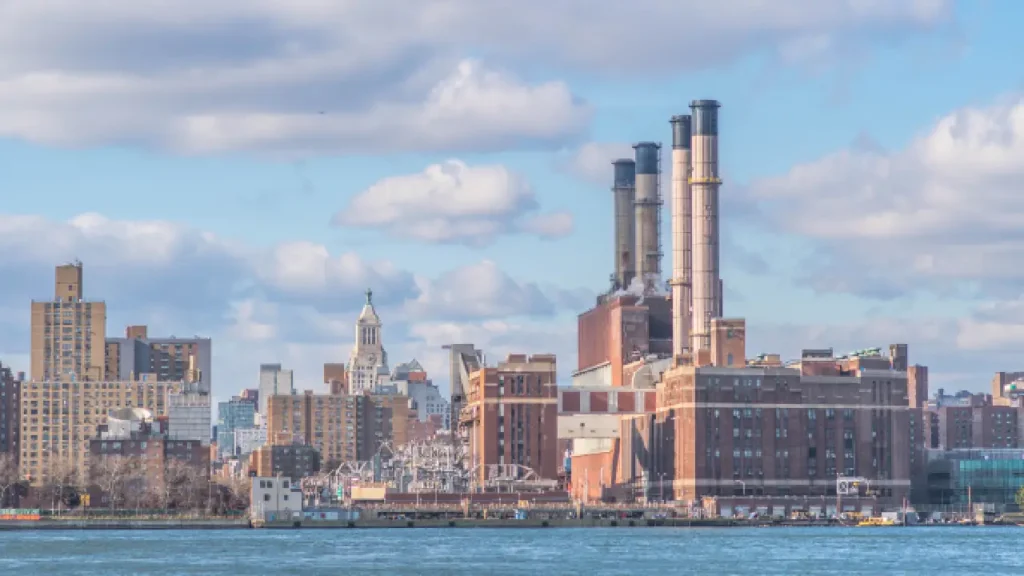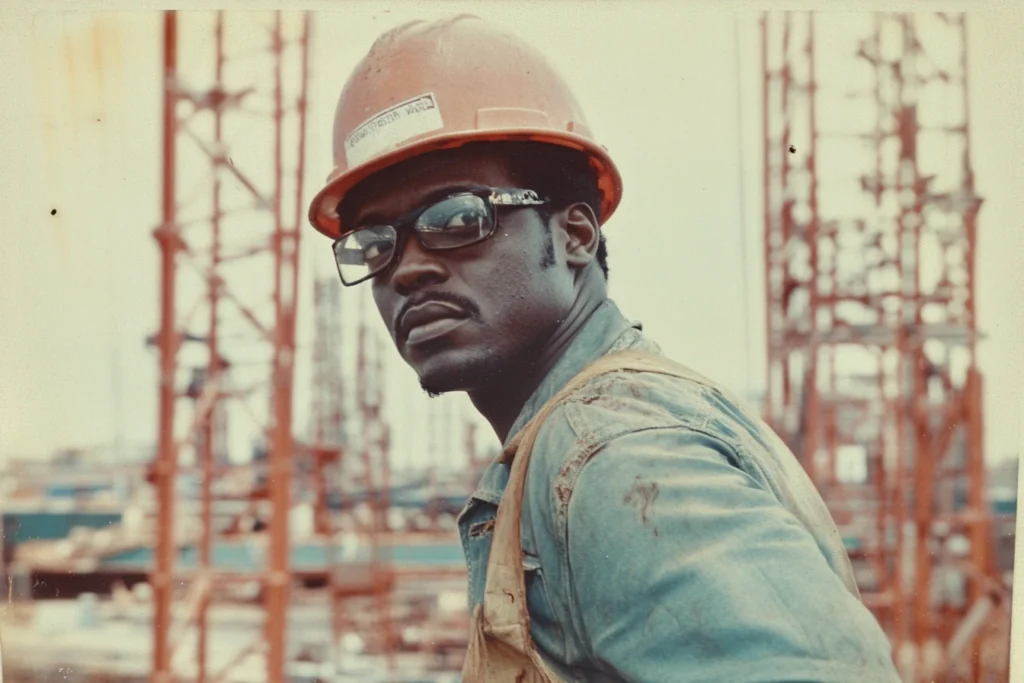If you were exposed to asbestos in the state, let an experienced New York mesothelioma lawyer help you get justice and compensation. New York has a long history of worker asbestos exposure and mesothelioma deaths.
If you or a loved one have been diagnosed with mesothelioma, asbestos-related lung cancer, or asbestosis, you may be entitled to substantial compensation. We invite you to complete our form today for a free Financial Compensation Packet, filled with information about experienced mesothelioma lawyers in New York, how to get paid in 90 days, how to file an asbestos trust fund claim, and much more.
Top 8 Asbestos and Mesothelioma Lawyers Serving New York

Jeffrey B. Simon
- Licensed to practice in New York, Texas, and California
- Graduated from the University of Texas School of Law in 1993
- Founding partner of Simon Greenstone Panatier, PC
- Named among Top Lawyers Under 40 by D Magazine in 2003 and 2004
- Named a Texas Super Lawyer by Super Lawyers (a Thomson Reuters service), 2006 to 2009 and 2014 to 2016
- Awarded a Dallas County Special Civil Service Commission from 2011 to 2013
- Awarded National Trial Lawyers’ Top 100 Trial Lawyers Award in 2016
- Awarded Lifetime Achievement Award by America’s Top 100 Attorneys in 2016
Jeffrey B. Simon is a founding partner of Simon Greenstone Panatier, PC. He is licensed to practice in California, Texas, and New York. He has worked on mesothelioma cases for over 20 years. Simon received a lifetime achievement award from America’s Top 100 Attorneys in 2016.

Paul Danziger
- Founding member of Texas-based law firm that handles asbestos and mesothelioma cases throughout the United States
- Over two decades of experience in mesothelioma litigation with more than 1,000 mesothelioma patients helped
- His law firm, Danziger & De LLano, has won more than $1,000,000,000 in mesothelioma-related claims
- Graduated with honors from the University of Texas, 1989
- Law degree from Northwestern University, 1993
- Bar admission in Texas
- Member of the American Association of Justice and Texas Trial Lawyers Association
- Recognized among Top 100 Trial Lawyers by National Trial Lawyers, 2017-2019
Working from his law offices in Texas, Paul Danziger handles mesothelioma cases throughout the United States. He has focused on mesothelioma litigation for over 25 years, and has recovered significant compensation for victims of mesothelioma, asbestos-related lung cancer, and asbestosis.
Paul Danziger earned a law degree from Northwestern University School of Law in Chicago in 1993.

Joseph W. Belluck
- Graduated State University of New York School of Law, magna cum laude in 1994
- Founding partner at Belluck & Fox, LLP
- Helped win significant compensation in multiple asbestos and personal injury cases
- More than 22 years of experience working with asbestos victims
- Represented New York state in a successful case against tobacco companies
- Volunteered at Trial Lawyers Care
- Earned the highest possible rating for legal abilities and ethical standards by Martindale-Hubbell since 2007
- New York Best and Super Lawyers, 2007 to the present (Thomson Reuters)
- Bar admissions in New York, Vermont, Colorado, and Washington
Belluck earned a degree in sociology from the State University of New York (SUNY) Binghamton in 1989 and a law degree from SUNY Buffalo School of Law in 1994.
He is a founding member of Belluck & Fox and has spent his entire career advocating for victims in personal injury and asbestos cases. He helps patients from his office in New York City, NY.

Lou Black
- Partner at Black Law Group
- Focuses solely on asbestos exposure and mesothelioma cases
- Graduate of Texas Christian University and South Texas College of Law, 1990 and 1993
- A career dedicated to asbestos cases and victims of mesothelioma and lung cancer
- Admissions in Texas and Pennsylvania
- Member, board of directors and executive committee of Texas Trial Lawyers Association
Lou Black is a partner and founding member of Black Law Group, with offices in New Mexico and Texas. A graduate of the South Texas College of Law, Black has been practicing law since 1993. She has dedicated her career to helping victims of mesothelioma and lung cancer from asbestos exposure seek justice and recover damages. She is an expert in asbestos litigation.
Lou is nationally-recognized asbestos attorney who frequently assists on cases around the country.

Chris J. Panatier
- Graduated from the University of Texas Law School in 2001
- Founding partner in Simon Greenstone Panatier, PC
- Won verdicts with significant damages
- With practice partner, brought the first verdict against Colgate-Palmolive for mesothelioma caused by talcum powder
- Named a Thomson Reuters Texas Rising Star, 2005 to 2012
- Named Thomson Reuters Texas Super Lawyer from 2013 to 2019
- Top Lawyer Under 40, as named by D Magazine for 2006
Chris J. Panatier is a partner in the trial law firm Simon Greenstone Panatier, PC. He focuses on asbestos and mesothelioma, toxic tort cases, products liability, and pharmaceuticals. With a partner he helped to win the first talcum powder and mesothelioma verdict against Colgate-Palmolive. Panatier earned his law degree from the University of Texas in 2001.

Michelle Whitman
- Secured millions of dollars in settlements for victims of asbestos exposure, including workers in construction, shipbuilding, and power plants
- Working through Danziger & De LLano, a mesothelioma law firm with over a billion dollars won in asbestos and mesothelioma cases
- Over two deceased of experience
- Licensed through the Texas State Bar
- Active member of American Bar Association, American Association for Justice, and Texas Trial Lawyers Association
Michelle Whitman is a skilled attorney at Danziger & De Llano, LLP, specializing in Mesothelioma and Asbestos litigation. With over a decade of experience in the field, Michelle has built a strong reputation for securing justice and substantial compensation for victims of asbestos exposure. Her expertise in asbestos-related cases has led to millions of dollars in settlements for clients suffering from mesothelioma and other asbestos-related diseases.

Peter A. Kraus
- Founding partner at Waters, Kraus & Paul
- Admitted to the State Bar of Hawaii, California, Missouri, Texas, and Virginia, as well as several U.S. Courts and the U.S. Supreme Court
- Involved in numerous mesothelioma cases with significant compensation for victims
- Graduated University of Texas School of Law, 1985
- Awarded Above and Beyond Award by the American Association for Justice in 2017
- Appointee to the Federal Judicial Center Foundation Board, 2014 to the present
- Named a Texas Top Rated Lawyer by Lexis Nexis, 2013 through 2016
- Listed Best Lawyer in Dallas by D Magazine, 2001, and 2011 to 2019
Peter Kraus is a founding partner with the Waters, Kraus & Paul law firm serving Houston from their Dallas, Texas office. He focuses on litigating cases related to harmful exposure, particularly asbestos. His nearly 30 years of work on behalf of asbestos and mesothelioma victims has led to major wins and jury awards. He is active in his community and spends time on pro bono work and in serving on boards of directors and trustees for a number of charitable organizations.

Ross Stomel
- Accreditation from the U.S. Department of Veterans Affairs for excellence in representing veterans
- Recovered over $250 million in verdicts and settlements related to asbestos exposure
- Named among the “Top 100 Trial Lawyers” by National Trial Lawyers Association
Ross Stomel is a leading expert in mesothelioma and asbestos litigation who practices in Houston, Texas. He has made a career of working with victims of personal injury and wrongful death, with special expertise in asbestos exposure. He has litigated throughout the U.S. and helped his clients recover more than $250 million in settlements and jury awards.
We help New York residents get the help and compensation they need, including residents of these and other cities:
Albany, Amsterdam, Auburn, Batavia, Beacon, Binghamton, Buffalo, Brookhaven, Islip, Kensington, Liberty Village, West Haverstraw, New Paltz Village, Hempstead, Oyster Bay, Rochester, Huntington, Ramapo, Amherst, Smithtown, Greece, Greenburgh, Cheektowaga, Clarkstown, Colony, Canandaigua, New Rochelle, Towanda, Schenectady, Clay, Cohoes, South Hampton, Hamburg, Hempstead Village, Irondequoit, Orangetown, Rye, Perington, West Seneca, Mount Pleasant, Webster, Henrietta, Freeport, Cortlandt, Lancaster, Monroe, Valley Stream, Ossining, Clifton Park, Penfield, Corning, Courtland, Dunkirk, Elmira, Fulton, Geneva, Glen Cove, Glens Fall, Gloversville, Hornell, Hudson, Ithaca, Jamestown, Johnstown, Kingston, Lackawanna, Little Falls, Lockport, Long Beach, Mechanicville, Middletown, Mount Vernon, New Rochelle, Bronx, Queens, New York City, Kings, Richmond, Newburgh, Niagara Falls, North Tonawanda, Norwich, Ogdensburg, Olean, Oneida, Oneonta, Oswego, Peekskill, Plattsburgh, Port Jevis, Poughkeepsie, Rensselaer, Rochester, Rome, Rye, Salamanca, Saratoga Springs, Schenectady, Sherrill, Syracuse, Troy, Utica, Watertown, Watervliet, White Plains, Yorktown, Carmel, Salina, Long Beach, Riverhead, Yonkers, and more.
New York Asbestos Statistics

- From 1979 to 1991, over 3,000 New York residents died from asbestos-related cancer. This estimate may be low because the United States government did not calculate all deaths until the 1990s.
- In 1998, 235 people died from an asbestos illness in the state. By 1999, the death rate increased to 2,343.
- Queens has the most victims of asbestos illnesses, with over 300 deaths. Most of these deaths were from mesothelioma, while over 60 were from asbestosis.
- Nassau County reported over 250 asbestos-related deaths, followed by Suffolk County with over 244 deaths.
- According to the National Center for Health Statistics (NCHS), New York ranks 34th for deaths from mesothelioma between 1999 through 2005.
- New York is home to several specialty cancer treatments and research centers. These include the Albert Einstein Cancer Center, Memorial Sloan-Kettering Cancer Center, New York University, and the Mount Sinai School of Medicine.
Find Out How Much Compensation Your Asbestos or Mesothelioma Case is Worth in New York

Calculate Case Value
How Industrial History and Occupational Exposure Contribute to Asbestos-Related Diseases in New York
New York’s industrial past is deeply interwoven with the history of asbestos use, leading to significant health repercussions for workers and their families. As the state evolved into a bustling hub of factories, textile mills, power plants, and shipyards, the demand for asbestos skyrocketed due to its exceptional heat-resistant properties.
The Impact of Shipyards
At the core of this issue were New York’s shipyards. Here, asbestos was indispensable for preventing fires and shielding metal from seawater corrosion. Workers, especially those in shipbuilding, faced constant exposure as asbestos products were extensively employed throughout vessels. As a result, thousands who served or worked in these shipyards were at risk, inadvertently taking asbestos fibers home on clothing and skin.
Manufacturing and Processing
Similarly, the state’s thriving manufacturing domain saw extensive asbestos integration. This mineral was added to a vast array of products to enhance durability and heat resistance. Such widespread use meant that workers across various manufacturing sectors routinely came into contact with hazardous asbestos fibers.
High-Risk Occupations
Several occupational roles stood at the forefront of asbestos exposure in New York. Key high-risk professions included:
- Chemical and construction workers
- Insulation and manufacturing plant workers
- Oil refinery and power plant employees
- Shipbuilders and those in textile mills
These sectors heavily depended on asbestos for its functional benefits, inadvertently putting those within at severe health risk.
Ripple Effects on Families
The danger didn’t stop at the workplace. Families of workers experienced secondhand exposure, with asbestos fibers hitching rides into homes on clothing or skin, further expanding the circle of those affected.
By tracing New York’s industrial history, it’s evident that the state’s reliance on asbestos-rich industries has left a lasting legacy of health concerns. This widespread occupational exposure has been a significant driver behind the prevalence of asbestos-related diseases in the region.
How Asbestos Exposure Became a Significant Issue in New York
Asbestos exposure in New York became a major concern notably after the tragedy of 9/11. The collapse of the Twin Towers released an estimated 400 tons of asbestos-laden dust into the city, drawing widespread attention to the dangers of the mineral. However, the roots of the asbestos issue in New York run much deeper.
In the late 19th century, New York emerged as a hub for asbestos-related industries. It played a critical role in popularizing asbestos due to its fire-resistant properties. Companies in New York City began mass-producing construction materials and insulation containing asbestos, driving the demand for this so-called ‘magic mineral.’ This boom made asbestos a staple in construction, shipbuilding, and various other industries nationwide.
By the mid-20th century, the hazardous health effects of asbestos exposure became clear. Companies involved in its production faced countless lawsuits, leading to significant legal and financial repercussions. Notably, the late 1980s marked a turning point when the first asbestos settlement trusts were created in New York, aiming to compensate affected workers and their families.
The legacy of asbestos in New York is a reminder of the mineral’s rise and fall, from miraculous solution to public health hazard. The realization of its risks has prompted ongoing efforts to address and remediate asbestos exposure, safeguarding current and future generations.
How to File a Mesothelioma Claim in New York

The first step in filing a mesothelioma claim is finding the right lawyer. They will review your case and determine which types of claims you qualify for:
Mesothelioma Personal Injury Lawsuit
Asbestos exposure is the leading cause of mesothelioma. Asbestos exposure most often occurs in the workplace and is negligent. This means that mesothelioma and other asbestos illnesses are personal injuries. The negligent companies can be held liable through a lawsuit.
Most mesothelioma lawsuits end in a settlement. If your case goes to trial, you could get a jury verdict, but it will likely take a lot more time to resolve.
Asbestos Trust Fund Claim
Asbestos companies that went bankrupt over lawsuits can no longer be sued. Instead, victims can file claims with asbestos trusts that these companies funded during the bankruptcy process. Your lawyer can find the asbestos trust funds you are eligible for.
Mesothelioma Wrongful Death Lawsuit
If you lost a loved one to mesothelioma, you may qualify to file a wrongful death lawsuit to recover damages. You can seek compensation for past medical expenses, funeral costs, and emotional pain and suffering.
Veteran Benefits Claim
Mesothelioma rates are high in veterans. The military used asbestos heavily, especially the U.S. Navy. If you served and now have an asbestos illness, you could be eligible for benefits through the VA. These include healthcare and disability compensation.
Working with a New York Mesothelioma Lawyer
Asbestos and mesothelioma attorneys will handle every step of the process of filing a claim or lawsuit. The process starts with a free consultation. A lawyer reviews your case and answers any questions.
If they believe you have a case, the lawyer will then enlist a team of investigators and experts. A New York mesothelioma lawyer will determine which companies exposed you to asbestos using your work history. They gather evidence to prove your exposure and resulting illness and build a solid case.
They will put these resources to work to negotiate a fair settlement or ensure you get trust fund compensation. They will litigate your asbestos case in court and seek a jury award if necessary.
What to Look for in a New York Mesothelioma Lawyer
Asbestos cases are complicated, but top-rated New York mesothelioma lawyers and law firms are available to help. Before you hire anyone, make sure the lawyer for your asbestos case meets these requirements:
- They offer a free initial consultation.
- They have proven experience and wins for asbestos clients.
- They work in New York and are part of a larger firm with jurisdiction in multiple states.
- They communicate regularly with their clients and come to you if necessary.
- They offer contingency payment, so you pay nothing until they win.
- They have experience settling cases and litigating in court.
How Does Asbestos Compensation Help Families Affected by Mesothelioma in New York?
Asbestos compensation serves as a crucial lifeline for families grappling with the challenges of a mesothelioma diagnosis in New York. Here’s how it makes a difference:
- Covering Medical Expenses: Mesothelioma treatment can be incredibly expensive. Compensation often covers substantial medical costs, including surgeries, chemotherapy, and other vital treatments, easing the financial burden on families.
- Supporting Lost Income: The illness can hinder an individual’s ability to earn, either because they are too unwell to work or because a family member becomes a caregiver. Compensation can supplement this lost income, maintaining financial stability.
- Managing Additional Expenses: Beyond the obvious medical bills, families face a range of other expenses, from travel costs for treatment to home adaptations. Asbestos settlements help alleviate these additional financial strains.
Types of Compensation Available
- Settlements from Legal Claims: Many families receive significant settlements through legal action. Experienced attorneys have a record of winning substantial awards for their clients, providing essential financial relief.
- Asbestos Trust Funds: Trust funds established by bankrupt asbestos companies offer another source of compensation. These funds provide crucial payouts to affected individuals without the need for lengthy court battles.
In essence, asbestos compensation in New York equips families with the financial resources they need to navigate this challenging journey, providing support and peace of mind.
Notable Asbestos Settlements and Verdicts in New York
New York has seen several significant asbestos-related settlements and verdicts, underscoring the severe health impacts of asbestos exposure. Here are some notable cases:
- In 2023, a former construction worker received a $31.5 million settlement after developing lung cancer. The cancer was attributed to his prolonged exposure to asbestos-laden boiler parts during his extensive career.
- The same year, a New York County Supreme Court jury awarded $28.5 million to a steamfitter who worked at the World Trade Center. This individual developed lung cancer due to asbestos exposure linked to his job.
- Another major verdict in 2023 came when a New York jury ordered a company to pay $23 million to a mesothelioma patient. His illness was traced back to working with hazardous materials like asbestos-containing flange gaskets and valves.
- Back in 2004, a combined sum of $22 million was granted to a former electrician from the Brooklyn Navy Yard and a seaman who served in both the Navy and Merchant Marines. This verdict was confirmed by the New York State Supreme Court.
- Lastly, the New York Supreme Court upheld a $15 million award to the family of a construction worker who succumbed to mesothelioma in 2023. The case involved exposure to asbestos-infested joint compounds, reinforcing the ongoing risks faced by those in the construction industry.
These cases reflect the gravity of asbestos exposure and the legal repercussions for industries failing to protect workers.
What are the Advantages of Choosing a Nationwide Asbestos Law Firm?
Engaging a nationwide asbestos law firm offers numerous benefits for those dealing with mesothelioma or asbestos-related claims. Here’s why expanding your search beyond local options may be advantageous:
- Broad Jurisdictional Reach: If your asbestos exposure happened outside of your home state, or the responsible company operates elsewhere, a nationwide firm can help navigate these complexities. They have experience with filing claims across multiple states, ensuring that your case is taken to the jurisdiction most favorable to you.
- Diverse Case Experience: With a presence in nearly every state, nationwide firms bring significant experience in handling various types of asbestos cases. This versatility can be crucial, as it allows the firm to tailor their strategy to the unique aspects of your situation.
- Strategic Case Management: Different states have varied statutes and regulations pertaining to asbestos litigation. A nationwide firm understands these nuances and can strategically choose where to file your claim. This tailored approach can potentially increase the likelihood of a favorable outcome.
- Resource Availability: Larger firms often have more resources at their disposal, from expert medical testimonies to comprehensive investigative teams. This breadth of resources can enhance the quality and depth of your case presentation.
- Increased Flexibility: Filing in your home state might not always be the ideal choice. A nationwide firm provides the flexibility to pursue your claim in the location that offers the best legal advantages, considering factors such as laws, previous case successes, and local jury perceptions.
In essence, working with a nationwide asbestos law firm offers strategic advantages that can significantly influence the success of your claim. By tapping into their broad jurisdictional expertise and resource availability, you can confidently navigate the complexities of asbestos litigation.
Where Was I Exposed to Asbestos in New York?

Nearly 400 sites in New York have been known to contain asbestos. These include shipyards, manufacturing plants, breweries, school buildings, industrial and manufacturing plants, office buildings, and hospitals.
Shipyards and Docks
- Brooklyn Naval Shipyard
- Brooklyn Coastal Dry Dock
- Bethlehem Steel Shipyard
- New York Naval Shipyard
- U.S. Naval Shipyard
Breweries
- Schaefer Brewery
Buildings
- Empire State Building
- Thruway Authority Building
- Bankers Trust Office Building
- Pan Am Building
- Bausch & Lomb Building
Plants
- Chevrolet Axle Plant
- Ford Motor Stamping Plant
- Sewage Disposal Plant
- Harrison Radiator Plant
- Glen Clove Power Plant
- General Electric Plant
- ALCOA Aluminum Plant
- Carborundum Plant
- R.E. Ginna Nuclear Power Plant
- Yorktown Sewage Plant
- Schenectady Chemical Plant
- American Locomotive Plant
- Delco Plant
Schools
- Saugerties High School
- Baldwinsville High School
- New York City Technical College
- Bennett High School
- Gowanda School
- Mercyhurst College
- Millcreek School
- State University of New York
- West Side High School (Corning)
- Cortland Senior High School
- Cornell University
- Ithaca College
Hospitals and Nursing Homes
- Amsterdam City Hospital
- Genesee County Nursing Home
- Southside Hospital
- Bassett Hospital
- Cortland Memorial Hospital
- Mohawk Valley Nursing Home
- St. Lukes Hospital
- Long Island Jewish Medical Center
- St. Lawrence State Hospital
- Oneida City Hospital
- Mather Hospital
- Creedmoor Psychiatric Center
- New York State Department of Mental Hygiene
- Rockland State Hospital
- Moses Ludington Hospital
Additional Businesses
- Republic Steel
- Western Electric
- Star Textile
- Dunlop Tire & Rubber
- Radio City Music Hall
- Plancor
- Torrington Industries
- Subway (New York City)
- Rockefeller Center
- Rochester Products
- Star Textile
- Linde Air Products Company
- New Hyde Park Supply
- Triangle Sheet Metal Workers
- Clark Estates
- International Milk Products Company
- Cortland County Jail Buildings
- Cortland County Traction Company
- Cortland Wagon Company
- Ekenberg Company
- Foster Wheeler Energy Corporation
- Dewitt Community Church
- Transelco Inc.
- Continental Can Company
- Long Island Light Company
- Garden City Hotel
- Our Lady of the Angels Seminary
Where Else Is There Asbestos in New York?
Workplaces are the primary sources of asbestos exposure, but not the only ones. New York is home to many older buildings containing mineral and naturally occurring deposits.
Pre-1970s Buildings
New York regulations in the 1970s placed strict rules on asbestos use. Newer buildings have little to no asbestos, but many older buildings may still have asbestos materials used in their construction.
Nearly 100,000 teachers, plumbers, engineers, electricians, and plumbers could be exposed on the job. However, these aren’t the only professions at risk. Various high-risk occupations are prevalent in New York, where workers might encounter asbestos more frequently.
- Chemical plant workers: Often handling materials that may contain asbestos.
- Construction workers: Regularly involved in renovation and demolition, activities known to disturb asbestos.
- Insulation installers: Directly work with insulating materials historically made with asbestos.
- Manufacturing plant workers: Exposed through machinery and building materials.
- Metal workers: May come into contact with asbestos used in metal fabrication.
- Oil refinery workers: Encounter asbestos used in fireproofing and heat-resistant materials.
- Paper millers: Work in environments where asbestos was used for its heat resistance.
- Power plant workers: Often exposed to asbestos insulation around turbines and pipes.
- Rubber workers: Could handle equipment insulated with asbestos.
- Shipbuilders: Historically used asbestos in shipbuilding for its fire-resistant properties.
- Textile mill workers: Worked with machinery and in environments where asbestos was used to produce heat-resistant fabrics.
Understanding these risks can help in taking necessary precautions to protect workers in these industries.
Current laws protect workers in older buildings, like asbestos safety training and appropriate gear.
Additionally, workers who handle or investigate asbestos must be professionally certified.
‘Asbestos Mountain’ in Kingston, New York
In 2022, a notorious dumping ground known as Asbestos Mountain was finally removed from Kingston in Ulster County. It was formerly part of a tech campus and home to IBM for three decades.
The site was left contaminated, especially with asbestos, which put local residents at risk of exposure. Government agencies finally implemented a plan that removed over 7,000 tons of asbestos.
Naturally-Occurring Asbestos in New York
Buildings and workplaces cause the vast majority of asbestos exposure in New York. However, the state is home to natural deposits that can also cause exposure:
- According to the Agency for Toxic Substances and Disease Registry, Jefferson County had the highest amount of mesothelioma deaths before 1981.
- Jefferson County contains naturally-occurring asbestos deposits.
- When disturbed by construction, road building, or natural disasters, these deposits can contaminate soil, air, and water.
What Are New York’s Asbestos Laws?
Asbestos laws in New York determine how mesothelioma lawsuits proceed. Safety regulations protect current workers and residents from exposure.
The Role of New York City in Asbestos Lawsuit Filings in 2023
In 2023, New York City emerged as a pivotal player in the landscape of asbestos litigation in the United States. Ranking as the third most active jurisdiction for filing such lawsuits, the city handled approximately 7% of all asbestos claims nationwide.
This substantial volume of cases has positioned New York attorneys as some of the most seasoned professionals in the field. Their extensive experience is a result of the city’s prominent status in these legal proceedings, making them highly adept at navigating the complexities of asbestos-related litigation.
Such a heavy caseload not only underscores New York’s significance but also highlights the city’s pivotal role in shaping the legal strategies and outcomes in this specialized area of law.
New York courts have developed specific procedural strategies to efficiently handle the substantial number of asbestos lawsuits they face. To streamline these cases, they implement a “first in, first out” process. This involves prioritizing claims from terminally ill individuals and setting them for expedited trials twice a year. This approach ensures that the most urgent cases receive attention swiftly.
In addition, the courts have designed case management orders to further manage these cases effectively. These orders allow for the clustering of similar lawsuits, which can include grouping multiple cases that originate from a single law firm. This grouping simplifies the trial and discovery phases, making the legal process more manageable and reducing delays. By organizing cases in this way, the courts aim to clear the backlog while ensuring fair and timely resolution for those affected.
Statute of Limitations

N.Y. Civ. Prac. Laws & Rules § 201 et seq. states that plaintiffs must file a mesothelioma or asbestos lawsuit within the statute of limitations.
The limit is three years from the time of diagnosis or two years from the time when an individual should have discovered it. This allows for the long delays people experience between asbestos exposure and diagnosis.
Plaintiffs in wrongful death cases must file lawsuits within two years of the victim’s death. Even though the statute for these lawsuits is strict, New York is known as a “pro-victim” state. Victims have already won millions of dollars in asbestos lawsuits.
Secondhand Asbestos Exposure and Take-Home Duty
Some mesothelioma patients were exposed to asbestos secondhand. This means that someone in the household worked around asbestos and inadvertently brought asbestos fibers home on their clothing. Many women who developed mesothelioma inhaled fibers on their husbands’ work clothes when they did the washing.
New York does not recognize take-home duty, the responsibility of a company to warn workers and their families about the risks of secondhand asbestos exposure.
A woman with mesothelioma was exposed to asbestos on her husband’s clothing. He worked at the Port Authority of New York. A court dismissed her lawsuit, claiming the asbestos companies involved had no duty to warn her of the dangers.
Asbestos Safety Laws
The New York Department of Labor’s Asbestos Control Bureau enforces both state and federal asbestos laws:
- Under Industrial Code Rule 56, anyone working on an asbestos abatement project must be licensed and certified.
- New York’s Department of Environmental Protection (DEP) must be notified before a large asbestos project can begin.
- The DEP can inspect any large asbestos projects at any time.
- Once asbestos projects have been completed, they must be closed according to New York law, which includes the proper handling, removal, and disposal of asbestos.
- Packages of asbestos being transported to a certified New York landfill must be clearly labeled.
For additional information regarding the New York asbestos laws, contact the New York Asbestos Control Bureau at 518-457-2735.
Getting Mesothelioma Treatment in New York
New York has thousands of mesothelioma cases, but it is also home to some of the best cancer treatment centers in the world:
- Albert Einstein Cancer Center, Albert Einstein College of Medicine, Bronx, New York City
- Memorial Sloan Kettering Cancer Center, New York City
- Herbert Irving Comprehensive Cancer Center, Columbia University, Manhattan, New York City
- Perlmutter Cancer Center, NYU Langone Health, Manhattan, New York City
Great people. Helped my family through our meso diagnosis.
– Donald H.
Getting Legal Help from a Reliable Asbestos Attorney in New York
If you’ve been diagnosed with mesothelioma, asbestos-related lung cancer, or asbestosis, keep in mind that you may qualify for substantial financial compensation. Don’t forget to fill out our form to get our free Financial Compensation Packet, filled with information on the experienced asbestos and mesothelioma attorneys in your area. For questions and assistance, feel free to contact us at 800-793-4540.

Joseph W. Belluck
Reviewer and EditorJoseph W. Belluck is a founding member of the New York mesothelioma law firm Belluck & Fox, LLP. He graduated magna cum laude from SUNY Buffalo School of Law and has since spent more than 20 years advocating on behalf of victims of asbestos diseases. His work has included more than $1 billion in settlements for victims. He is also deeply involved in public service and philanthropy, serving on advisory boards, state commissions, and groups dedicated to helping children in foster care.
References
- New York State Department of Labor. (2007, March 21). Code Rule 56 Asbestos – Related Information.
Retrieved from: https://dol.ny.gov/code-rule-56-asbestos-related-information - Environmental Working Group. (n.d.). Asbestos-Related Deaths in New York.
Retrieved from: http://www.asbestosnation.org/facts/asbestos-deaths/ny/ - Van Gosen, B.S. (2006). Reported Historic Asbestos Mines, Historic Asbestos Prospects, and Natural Asbestos Occurrences in the Eastern United States. U.S. Geological Survey.
Retrieved from: https://pubs.usgs.gov/of/2005/1189/pdf/Plate.pdf - National Cancer Institute. (n.d.). Find a Cancer Center. New York.
Retrieved from: https://www.cancer.gov/research/infrastructure/cancer-centers/find#NewYork - Occupational Safety and Health Administration. (n.d.). Asbestos.
Retrieved from: https://www.osha.gov/SLTC/asbestos/construction.html - Selikoff, I.J. and Hammond, E.C. (1978). Asbestos-Associated Disease in United States Shipyards. CA-Cancer j. Clin. 28(2), 87-99.
Retrieved from: https://onlinelibrary.wiley.com/doi/pdf/10.3322/canjclin.28.2.87 - JDSupra. (2022, February 14). Jurisdictional Analysis Shows Divide on Duty for Take-Home Asbestos Exposure.
Retrieved from: https://www.jdsupra.com/legalnews/jurisdictional-analysis-shows-divide-on-5674470/ - Welber, B. (2022, October 20). New York Removes Dangerous ‘Asbestos Mountain’ from Hudson Valley, Jobs Coming. Hudson Valley Post.
Retrieved from: https://hudsonvalleypost.com/new-york-removes-dangerous-asbestos-mountain-from-hudson-valley-jobs-coming/
